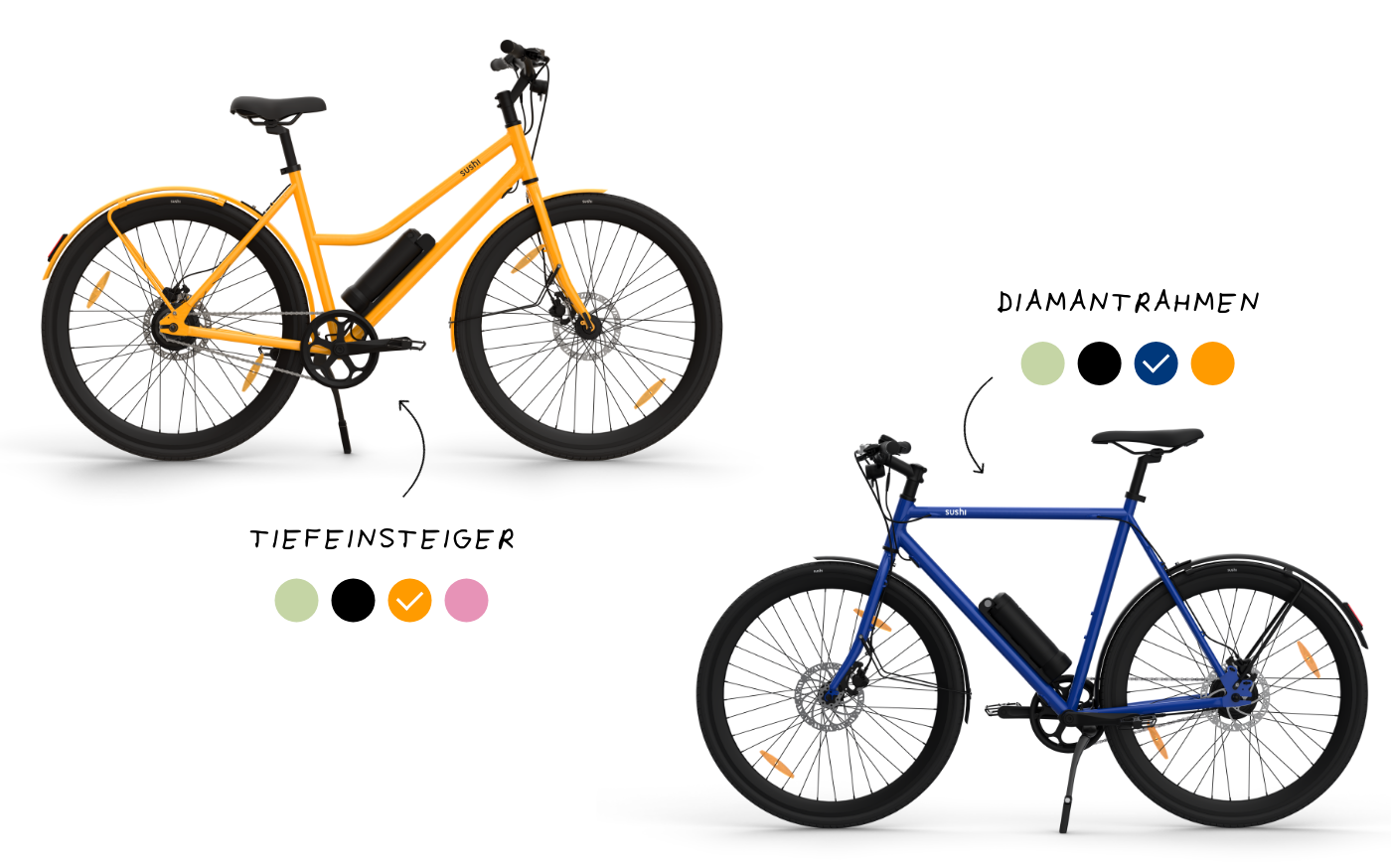Regardless of whether you are young or old, learning to ride a bike can sometimes be a challenge. But with our tips you or your child will become an absolute professional cyclist! Get ready for a ride full of fun, adventure and some hopefully harmless falls. Here we go!
Why should you learn to ride a bike at all?
Why learn to ride a bike? Well, quite simply: Because it's fun! Whether you sped around on two wheels as a child or discovered cycling as an adult - there is nothing better than exploring your surroundings by bike. But that's far from the only reason why we should all learn to ride a bike. Cycling also has many health benefits: it strengthens the cardiovascular system, promotes endurance and increases physical fitness. And last but not least, you are doing the environment a favor if you switch to cycling more often instead of getting into the car. So let's get started - with these tips you'll become a professional cyclist in no time!
The right equipment for safe cycling
An important aspect of cycling is having the right equipment. Because you can only move safely in traffic with the right clothing and the right equipment. Regardless of whether you are a child or an adult, a well-fitting bicycle helmet is essential because it protects your head from serious injuries in the event of a fall. Gloves are also recommended at the beginning to avoid slipping off the handlebar grips. You should also pay attention to reflective clothing so that you can be clearly visible even in the dark. Of course, a roadworthy bike is also essential. This includes working brakes, lights and reflectors. If you are unsure whether your bike is still roadworthy, it is best to take it to the nearest workshop and have it checked. This usually costs between 20 and 60 euros. Also make sure that the bike has the right frame size and fits your own and individual needs. If you follow these tips, you'll be able to navigate traffic safely and enjoy learning to ride a bike.
The ideal training locations
Children in particular should under no circumstances participate directly in traffic and practice on the street. Here are a few suggestions on where you can best practice:
- Parking spaces
- On your own property
- Parks
- Dirt roads
Beginner tips for learning to ride a bike
Cycling is not only an environmentally friendly way to get around, but also a great way to stay fit and enjoy nature. But before you get on the saddle, you should familiarize yourself with a few tips for beginners.
- It's better to push rather than push, it motivates you to push yourself. It is important that the person pushing gives a timely signal as soon as they let go.
- Don't be afraid of falling, because because you move slowly, especially at the beginning, it is rare for serious injuries to occur when you fall.
- Step by step. At the beginning it is advisable to practice driving straight ahead. Once that works, you can try out winding routes and become more and more familiar with the technology (e.g. gear shifting, etc.) on the bike.
- Brake first. Then ride: Anyone who has practiced how to safely stop a bike is less afraid of cycling.
Test all options for braking:
Front brake / Rear brake / Hold both brakes and try to push the bike.
Front wheel brake only / Rear wheel brake only / Use both brakes Brake carefully / Brake forcefully
- Practice makes perfect! Even if the first attempts don't work out the way you expected, it's important to keep at it and consciously integrate cycling into your everyday life. Over time, you automatically become more experienced and confident when cycling.
Further beginner tips for children:
- Put the saddle low, unscrew the pedals and use the bike as a balance bike to get a feel for the speed.
- Training wheels? Rather not. Stabilizer wheels prevent balancing while driving and can even pose a risk of injury to children, for example if they get stuck or the bike falls over.
From beginner to professional cyclist: tips and tricks
If you have already mastered your first steps on the bike and feel confident, then nothing stands in the way of your development as a professional cyclist. But how do you manage to improve your skills and take yourself to a higher level? Here are some tips and tricks that can help you:
- Set realistic goals and practice and ride regularly. It's important to stick with it and not give up.
- Work on your sense of balance. Balance is crucial when cycling. For example, try to balance yourself standing on one leg.
- Improve your technique and reaction time while driving. No matter whether it's braking, shifting gears or cornering - the better your technique, the safer and more effective you will be on your bike. Observe other cyclists or watch videos to learn from their techniques.
-
Train your endurance. The longer you can sit on the saddle, the further you can ride and the more experience you gain. Try to cover longer distances or set yourself the goal of climbing a mountain.
Tip: E-bikes have the advantage that you can climb slopes and mountains almost effortlessly.
- Have fun! The most important thing about cycling is still the fun factor. Try new routes, ride with friends or take part in a bike race - just enjoy the freedom and the feeling of wind in your hair. Who knows, maybe you'll soon be a real professional cyclist!
How to stay safe on the road
As a cyclist, you are not only on the bike paths, but often also in traffic. But how can you get around safely here? First of all, you should always follow the traffic rules and stick to speeds so that you can brake quickly in an emergency. Wearing a helmet is also very important to protect yourself in the event of a fall. In addition, you should always be clearly visible, for example by using reflective clothing or lights on your bike. Another important rule is to never drive in the blind spot of vehicles and to always act with foresight. If you follow these tips and drive carefully, nothing will stand in the way of safe driving on the road!



